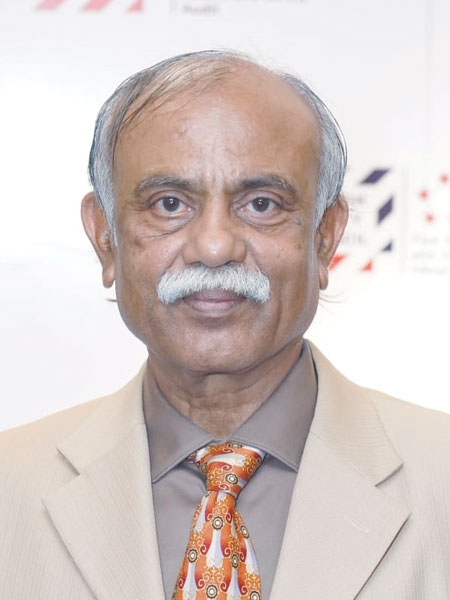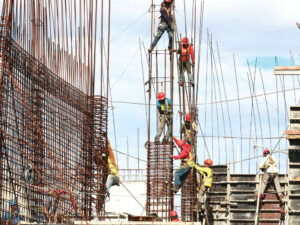Constructing with confidence: Prioritising project safety in construction industry
Kamarajan M Head of Education, British Safety Council India The construction industry in India is the third-largest sector among the thirteen major economic sectors. It is also the second-largest job creator after agriculture. This industry includes real estate, infrastructure, and urban development. It operates in both urban and rural areas across 250 sub-sectors. The real

Kamarajan M
Head of Education, British Safety Council India
The construction industry in India is the third-largest sector among the thirteen major economic sectors. It is also the second-largest job creator after agriculture. This industry includes real estate, infrastructure, and urban development. It operates in both urban and rural areas across 250 sub-sectors. The real estate sector employs many construction workers. This sector has seen a rise of about 80 per cent in the past decade, from Rs 7,800 crore in 2013 to Rs 14,000 crore in 2022.
Real estate industry is estimated to contribute 12-15% to the country's GDP by 2025. Yet it is alarming to know that the construction sector contributes to 24.20% of occupational fatalities. Moreover, falls account for roughly 40 per cent of the fatalities, with over 8 per cent caused by being struck by objects and approximately 8.5 per cent resulting from electrocution. These figures shouldn't be looked at as just numbers. These figures must be seen with the sad truth that someone failed to prevent these accidents.
To understand this statement better, let's look at some root causes driving injuries and fatalities in workplaces.
Lack of training
A gap exists between the desired level and the actual of competence of majority of the workers in construction industry. This space remains unfilled most of the times, because of the workers' temporary status. Since most of these workmen are from far-flung areas and are migrant workmen, it is very difficult to retain them in the construction sites without their family members, 3 to 6 months is their maximum retention period. Contractors inherently don't feel the need to invest in those migrant workers - in terms of both skills and well-being. However, it is time to reverse this vicious cycle by providing better opportunities to contact their family members remotely and by providing better living conditions and recreational facilities and hoping to increase their retention period and the possibility of they are returning to the same contractors, rather than looking for greener pastures.
Neglecting safety to cut cost
Some companies often struggle to recognize the efforts, resources, and time needed to implement safety requirements as an investment. This is because they may lack a long-term vision and tend to view safety primarily as a cost. Even reputable and established construction companies sometimes tend to adopt a lax stance towards health and safety practices when their clients do not emphasize the importance of safety measures. One of the reasons for this situation is the different layers of contracting in the industry and the client not considering whether the contractor has made enough provisions for carrying out the job in a safe manner before issuing the work order to them.
Distance can lead to neglect
Another factor that influences safety practices in the construction industry is the location of the ongoing project in relation to their head office from where functional controls, such as HSE, quality, etc. are managed remotely. An inverse relation exists - the more distance between the project and the construction company's headquarters, lesser the safety performance. Poor safety practices could result from a lack of inspectors, lack of accountability on the line managers, and a lax attitude of middle and upper-level management.
Lack of inspection
The abovementioned reason brings us to another point - the lack of competent inspectors and supervisors. The absence or the inadequate number of competent supervisors inherently increases the risk of accidents or injuries. Additionally, many construction site incidents, including major injury accidents (except fatalities, which cannot be hidden), go unreported due to the limited data-capturing capabilities of the enforcement authority for Building & Other Construction Workers (BOCW) Rules, unlike the more accurate data collection by the officers overseeing factories rules.
Lack of government control
While India has proactive safety rules and regulations, the issue lies in the implementation/enforcement challenges. A reason could be the lack of resources available to the enforcement departments and the size of our country. Government of India's Safety, Health and Environment (SHE) policy, formulated decades ago, industries to self-regulate and the culture among the industry is not ready for the self-regulation. Organizations are expected to regulate independently without expecting the government to impose safety, which might not happen, unless the enforcement is tightened up. 'Fear of getting caught' is one of the fundamental requirements to influence the behaviour of people and it applies to employers as well. Using the emerging technologies, road safety is being enforced very successfully in many metropolitan cities (although in a limited manner currently) with the video feeds from CCTVs, combined with artificial intelligence. Similar arrangements could be thought about for improving the safety standards in industries also.
What measures should companies take to improve construction safety?
Safety audits
The foremost step is to carry out inspections and audits. An audit aims to measure the effectiveness of a company's safety management system. The number of audits to be conducted is subjective and depends on project to project. Companies should arrange audits frequently at a reasonable time gap. The time gap is justified because systems do not rust overnight. Comprehensive audits, if done in an unbiased and independent manner, can help the industries to take great strides in improving their safety standards and their safety management system.
Dynamic risk management
Moreover, the lack of training and the ever-changing technology is trying to hold hands in today's date. While this approach may yield results, it is certainly not sustainable. This is where dynamic risk management comes in. Dynamic risk assessment is a continuous risk assessment system. While a generic risk assessment is carried out at the beginning of the project for all activities, contractors should conduct a task-specific risk assessment (TRA) before starting each activity. This assessment considers the actual environment in which the activity is performed and carried out daily.
Commitment to safety
There is a lot that contractors can do to improve safety. The senior management themselves must decide to pitch for higher safety standards. They must be the ones to stand up for their employees as role models. If they commit to safety in a consistent manner, reform is bound to follow. Smaller construction companies have excelled in cultivating a positive safety culture among their employees, using simple techniques, such 'safety observation programs', 'safety conversation programs' etc. which are basically some of the tools to imbibe safety culture at the minds of all levels of employees.
Choosing the right construction materials
Another conscious step that contractors can take is to choose suitable materials. By refraining from using asbestos-containing materials (ACM) and lead-based paints, contractors can effectively prioritize the safety and health of construction workers and building users. Contractors should also consider using shatter-proof and tempered glass panels and doors for elements like the façade and balustrades. This precautionary measure aims to minimize the risk of severe injuries to the workers involved in the installation and the individuals nearby in case of potential accidents or failures.
Reform is the need of the hour
Undoubtedly, construction workers are the driving force for the real estate sector. However, for the betterment of all the stakeholders, it is essential to do away with the attitude of 'they are replaceable'. It disregards their work and takes away their rights. This will inherently affect the quality of work. Moreover, improved facilities will foster a safer and healthier environment for workers and benefit the stakeholders involved in the construction process by getting improved productivity levels.
By prioritizing their needs, construction companies can boost morale, increase job satisfaction, and attract better labour, ultimately leading to a more productive workforce. One should note that better facilities for construction workers also resonate with broader societal goals. It aligns with sustainable development principles by promoting social equity, inclusivity, and human rights. Ultimately, investing in improved worker facilities is an investment in a more responsible, inclusive, and prosperous construction industry for the betterment of all.

Hits: 3







